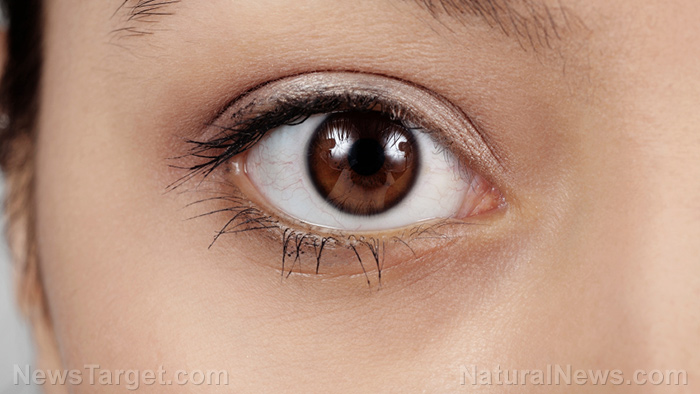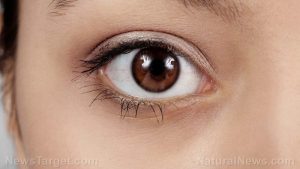
Diabetic retinopathy – causes, side effects and treatments at NaturalPedia.com
Friday, March 09, 2018 by Ralph Flores
http://www.naturalpedia.com/diabetic-retinopathy-causes-side-effects-and-treatments-at-naturalpedia-com.html

Diabetic retinopathy is the collective term used for all disorders of the retina caused by diabetes. When a person has diabetes, the high blood sugar levels affect the blood vessels in the retina, causing them to swell and leak. In some cases, the condition inhibits blood flow to the eye, which can ultimately rob a person of sight.
There are various forms of diabetic retinopathy:
- Nonproliferative retinopathy is the most common form of retinopathy. This occurs when the capillaries located at the back of the eye are affected, leading to the formation of pouches and a ballooning of the blood vessels. There are three stages in nonproliferative retinopathy, with each stage indicating the severity of blockage of blood vessels.
- Proliferative retinopathy is a serious form of retinopathy wherein the blood vessels become so damaged that they close off. New blood vessels appear in the retina in response to the damage, but these are weak and can leak blood.
While diabetic retinopathy is severe, it takes several years before the conditions advance to a stage where a person’s sight is at risk.

Known risk factors and symptoms of diabetic retinopathy
People with diabetes (i.e., type-1, type-2, and gestational) are at most risk for diabetic retinopathy, as this is a complication arising from it. Moreover, the risk also increases the longer a person has diabetes. In the U.S., at least 45 percent of people with diabetes have been diagnosed to have some stage of diabetic retinopathy. People who have poor control of their blood sugar (glucose), as well as those who smoke and have a high blood pressure, are also at risk of developing the condition.
Common symptoms of diabetic retinopathy include:
- Blurred vision and slow vision loss over time,
- The presence of eye floaters which may block vision,
- Shadows and missing areas of vision,
- Trouble seeing at night,
Early stages of diabetic retinopathy are asymptomatic; however, it can be detected through having regular eye exams. However, when the condition is left untreated or unattended, the following complications may occur:
- Vitreous hemorrhage occurs when blood vessels in the eye leak into the vitreous body – the clear, jelly-like substance in the center of the eye. While small amounts of bleeding can cause eye floaters, blood can flood the cavity and completely block a person’s vision.
- Retina detachment is characterized by the formation of scar tissue in the back of the eye. The causes the retina to be pulled away from the back of the eye, leading to severe loss of vision.
- Glaucoma happens when the normal fluid flow of the eye is interrupted, causing pressure to build up. The pressure can damage the optic nerve which carries images from the eye to the brain.
Body systems affected by diabetic retinopathy
Diabetic retinopathy primarily affects the eyes.
Food items or nutrients that may prevent or relieve diabetic retinopathy
Proper diet can attenuate the effects of diabetic retinopathy. In particular, the Mediterranean diet is known to reduce the likelihood of diabetes, as well as improve the quality of life of people with the condition.
Treatment and management options for diabetic retinopathy
Several treatments are available to address diabetic retinopathy.
- Anti-VEGF injection therapy — A protein called vascular endothelial growth factor (VEGF), which can stimulate abnormal blood vessel growth, is suppressed with the procedure.
- Focal macular laser surgery — Laser burns are used to slow down the leakage of fluid, which reduces the swelling of the retina.
- Corticosteroids — These are either injected or implanted into the eye to inhibit inflammation and reduce the risk of glaucoma and cataracts.
Where to learn more diabetic retinopathy
- Marijuana Compound May Help Stop Diabetic Retinopathy (press release)
- NaturalNews.com 1
- NaturalNews.com 2
- 8 Herbs that Help Improve Eyesight
- 16 Powerful Herbs for Diabetes Treatment
Summary
Diabetic retinopathy is the collective term used for all disorders of the retina caused by diabetes. When a person has diabetes, the high blood sugar levels affect the blood vessels in the retina, causing them to swell and leak. In some cases, the condition inhibits blood flow to the eye, which can ultimately rob a person of sight. While the condition is severe, it takes several years before the conditions advance to a stage where a person’s sight is at risk.
People with diabetes are at most risk for diabetic retinopathy, with the risk increasing the longer a person has diabetes. People who have poor control of their blood sugar (glucose), as well as those who smoke and have a high blood pressure, are also at risk of developing the condition.
Sources include:
Tagged Under: Tags: diabetic retinopathy





